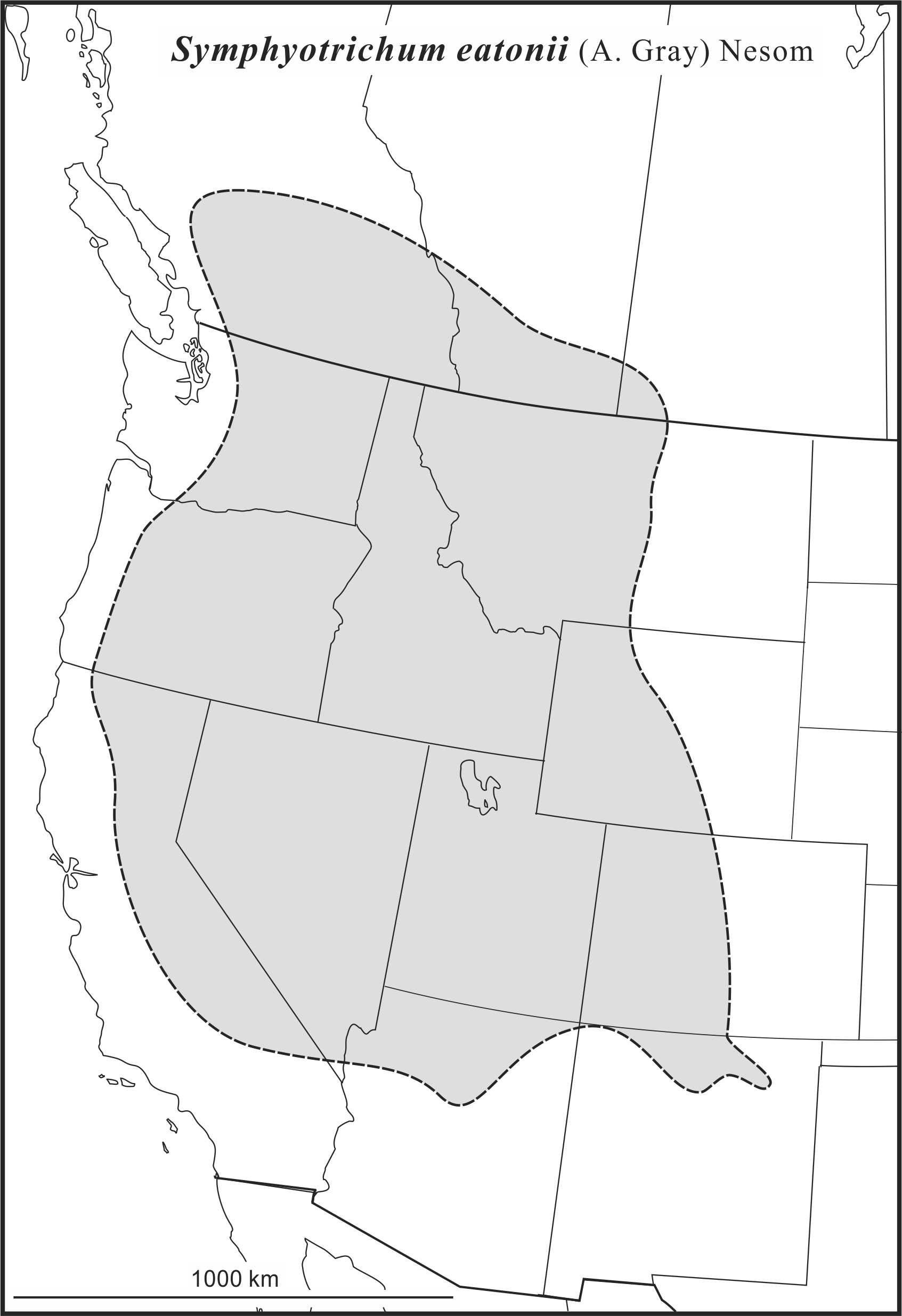Eaton’s Aster
Symphyotrichum eatonii (A. Gray) Nesom occurs in moist to wet sunny places, wet thickets, along streams and ditches from Saskatchewan to British Columbia south to New Mexico, Arizona and California. The species was first described as Aster foliaceus Lindley var. eatonii A. Gray and has been known under the names Aster bracteolatus Nutt., Aster eatonii (A. Gray) Howell and Sy. bracteolatum (Nutt.) Nesom. Stems can be up to 1 m tall and occur in short-rhizomed clumps; leaves are thin, margins entire or sometimes serrate, apices acute; basal leaves withering by flowering; phyllaries are often spreading, oblanceolate (outer) to linear (inner), subequal,; rays are white to pink. The species includes diploids (2n=16), tetraploids (2n=32), hexaploids (2n=48), and octoploids (2n=64).
The species might be confused with Symphyotrichum lanceolatum var. hesperium which has phyllaries similar in shape but not obviously spreading.
Brouillet, L., J.C. Semple, G.A. Allen, K. Chambers and S. Sundburg. 2006. Symphyotrichum Nees. pp. 465-539. In Flora North America Editorial Committee, eds. Flora of North America. Vol. 20. Asteraceae, Part 2. Astereae and Senecioneae. Oxford University Press, New York.
Last revised 14 May 2025 by J.C. Semple
© 2025 J.C. Semple, including all photographs unless otherwise indicated
1-4. Symphyotrichum eatonii. 1. Habit, Semple & Brouillet 4382, Idaho. 2-3. Stem leaves and head, Semple & B. Semple 11275, Cache Co., Utah. 4. Range map draft JCS.







